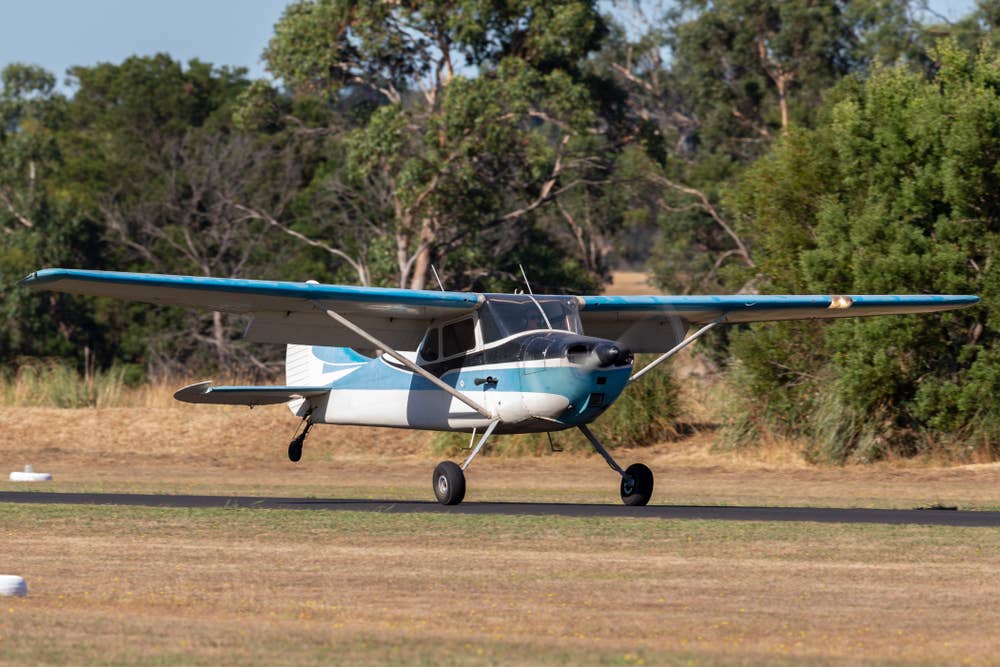Five Taildraggers That Are Easy To Buy, Fly, and Insure
The lower values of some vintage models is a good thing for buyers.

Cessna 170B [Shutterstock]
Many of us were drawn to small aircraft because of the freedom they represent. As private pilots, we can fly almost whenever we want to, weather permitting, and access airports in interesting locations that are too small or out-of-the-way for airline service.
Tailwheel aircraft arguably are the fullest expression of that freedom because they often don’t need airports at all. A field, dirt path, or gravel bar in the middle of a river will do. While off-airport exploration is possible in tricycle-gear airplanes, the endeavor usually works out better with a tailwheel.
For many years, taildraggers looked as if they were headed for extinction, or at least obscurity, in part because most students were learning to fly in Cessna 150s, 172s, and other tricycle-gear models. There were few new aircraft with tailwheels, and in the used market, nose wheel airplanes were easier to find, fly, and insure.
The arrival of the light sport aircraft segment helped change the market by adding new taildraggers, which many pilots had not seen for decades. However, it seems like a new appreciation for older aircraft has made the biggest difference in the outlook for tailwheel flying.
Younger pilots are gravitating toward the vintage machines, many of them built as far back as the 1940s, because of their classic vintage designs, back-to-basics appeal, and of course, low prices. In an era when trekking through Aviators Hot Line might turn up a 20-year-old Beechcraft A36 Bonanza for $500,000, it is easy to understand why newly certificated airplane shoppers would head straight for the oldies section. That is where the old taildraggers live, and love at first sight is common there.
Pilots should never run blindly into an airplane purchase, and septuagenarian airframes are not for everyone. But if, after proper due diligence, you decide a vintage taildragger is the right airplane, you will find there are many from which to choose. Below are a few models we believe are among the easiest to live with in terms of purchase price, insurance cost, and ease of operation.
Piper J-3 Cub
It makes sense that the airplane that taught generations to fly, beginning in the 1930s, would still have a lot to offer pilots today. Just make sure you are not in a hurry to get anywhere. Many that were delivered with 65 hp engines have been upgraded to 85 or 100 hp, but pilots should not expect to cruise at much more than 60 to 80 knots.
Aeronca Champion
A rival to the Cub, the tandem-seat Aeronca “Champ” is preferred among pilots who like to solo from the front seat instead of the back, like in a J-3. Some say it is more forgiving and has better visibility and a more modern feel than the Cub—it came out in the mid-1940s, after all. Still, deciding between these two mellow old timers mainly comes down to aesthetics.
Bellanca Citabria
If you like the Champ but want something a couple of decades newer, with more power, and designed for mild aerobatics, the Citabria checks the boxes. The earliest models, introduced in 1964, had 100 hp. Later versions came with bigger engines, some with fuel injection and special oil systems for prolonged inverted flight. It eventually spawned the Decathlon—now produced by American Champion Aircraft—which looks like a Citabria but has a different wing and is capable of more advanced aerobatics.
Luscombe 8
If you prefer side-by-side seating instead of tandem, and would like something a little rarer than Pipers and Cessnas, you might consider a Luscombe 8. Like many of its two-seat rivals, it does not cost a king’s ransom to insure because despite arguably being collectible, its hull value is relatively low. The variety of models in the 8 series vary in hp and performance.
Cessna 170
Taking a family trip? Then you might want a taildragger with four seats. While there are alternatives to the Cessna—the Stinson 108 comes to mind—few vintage four-seaters are as inexpensive and easy to fly as the 170. It is safe to assume the airplane that gave birth to the Cessna 172 is gentle and forgiving on the ground and in the air. But like the others on this list, it is still a tailwheel aircraft that needs to be “flown” carefully all the way to its parking spot.

Subscribe to Our Newsletter
Get the latest FLYING stories delivered directly to your inbox






